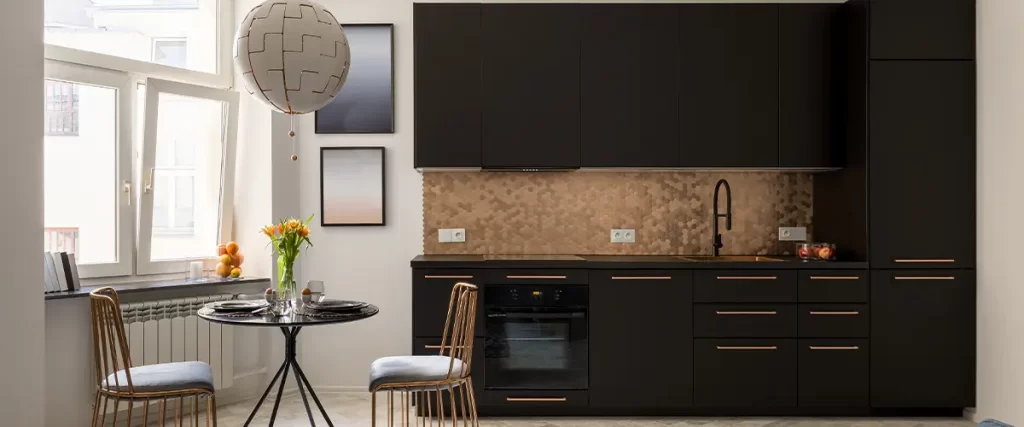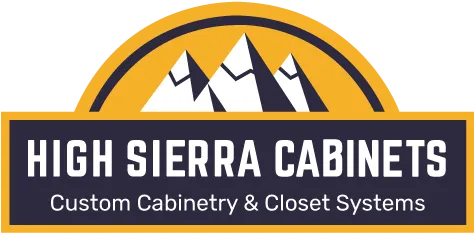If you live near Reno or the surrounding Sierra Nevada foothills, you know wildfires aren’t just a seasonal concern; they’re a yearly reality. You’ve probably seen smoke roll down from the hills or heard the fire warnings echo across neighborhoods.
Maybe you’ve even had to evacuate. As a homeowner in this part of Nevada, fire safety isn’t just about defending the outside of your home; it’s also about thinking smartly about what’s inside, like your cabinetry.
Most people focus on clearing brush or hardscaping their yard, but interior choices matter too. Fire-resistant cabinet materials can make a big difference in slowing down how flames spread indoors and may even protect essential belongings when every second counts. If you’re remodeling your kitchen, building a new home, or simply want to upgrade for peace of mind, this guide is for you.
Let’s dive deep into the best cabinet materials for homes in Reno’s wildfire-prone zones, what makes them fire-resistant, how they perform under heat, and why making this switch might just be one of the smartest fire-prep moves you make.

Why Fire-Resistant Cabinets Matter in Reno
Reno’s dry summers, high desert winds, and proximity to fire-prone forests put many neighborhoods on the frontlines of wildfire risk. Areas like Galena, Somersett, and parts of Washoe Valley have seen increasing fire danger over the last decade.
As wildfire season extends longer each year—starting earlier in spring and lingering well into fall—the need to fire-harden your home from the inside out has never been more urgent.
Nevada’s wildfire mitigation efforts, such as those led by the Nevada Division of Forestry and Truckee Meadows Fire & Rescue, emphasize building materials as a critical line of defense. While you may already use Class A roofing or non-combustible siding, your cabinetry is another layer of protection that’s often overlooked.
Cabinets—especially in kitchens, garages, or utility rooms—are where heat can accumulate quickly, and if made of untreated wood or flammable materials, they can easily contribute to rapid interior fire spread.
Think of fire-resistant cabinets as part of a broader safety net, one that supports evacuation time, reduces potential fire damage, and aligns with regional recommendations for fire-smart living.
What Makes a Cabinet Material Fire-Resistant?
Fire-resistant cabinet materials are specifically designed or treated to withstand high temperatures without igniting, warping, or emitting toxic fumes. It’s not just about whether a material will catch fire, but how it behaves under heat. Will it emit smoke? Will it warp and fail, exposing internal components? These questions matter—especially when cabinets hold cleaning products, kitchen oils, or other flammable contents.
There are two main approaches to fire resistance:
Inherent resistance, like that found in materials such as steel, fiber cement, or naturally dense hardwoods.
Engineered resistance, which involves applying fire-retardant coatings or using fire-rated particleboard, MDF, or plywood.
Each has its place, depending on the design goals of your space and your overall fire safety strategy.
Top Fire-Resistant Cabinet Materials to Consider
If you’re remodeling a kitchen, mudroom, garage, or utility space, the materials you choose can mean the difference between early containment and rapid fire escalation.
Stainless Steel
Used for decades in commercial kitchens and labs, stainless steel is inherently fire-resistant. It won’t burn, warp, or emit toxic smoke. It’s sleek, modern, and easy to clean. While more expensive than traditional wood options, it’s a smart investment in high-risk zones like the outskirts of Reno or Incline Village, where defensible space and ignition-resistant construction are encouraged by local fire departments.
Fiber Cement Board
This material is typically made from a blend of cement, sand, and cellulose fibers. It’s known for being both fire- and moisture-resistant, which makes it ideal for high-humidity areas like bathrooms or utility spaces. It’s not as common for cabinetry but is growing in popularity thanks to its ability to resist flames and not contribute to indoor fire spread.
Fire-Retardant-Treated Wood (FRTW)
FRTW is treated with chemical preservatives that reduce its flammability. It still offers the warmth and beauty of real wood but performs much better in high-heat conditions. Many building codes around high-risk wildfire zones now include provisions for using FRTW, especially in garages and other high-exposure areas.
Class A Fire-Rated MDF or Plywood
These engineered woods are treated or built to meet Class A fire ratings under ASTM E84 standards, meaning they have the lowest flame spread and smoke development indexes possible for wood products. Perfect for interior applications, they provide peace of mind without completely abandoning traditional cabinet styles.
Gypsum-Based Cabinets
More often used in industrial and medical settings, gypsum-core boards wrapped in steel or laminate offer extreme fire resistance. Though not typically found in residential homes, some fire-conscious homeowners in high-risk areas are beginning to explore this material as part of a full-scope fire mitigation plan.
Fire Resistance Ratings: What You Need to Know
When researching fire-resistant cabinet materials, you’ll come across terms like “Class A” or “ASTM E84.” These ratings help you understand how materials perform in a standardized burn test.
In general:
Class A materials have a flame spread index of 0-25, making them the most fire-resistant.
Class B ranges from 26-75, and Class C from 76-200.
Aim for Class A materials wherever possible, especially if your home is within a “Very High Fire Hazard Severity Zone” as mapped by CAL FIRE or similar agencies across the Nevada border. While these aren’t mandatory inside private homes, using them aligns with best practices for passive fire protection.
How to Blend Safety with Style
Let’s be honest—nobody wants their kitchen to feel like a bunker. Fire-resistant doesn’t have to mean industrial-looking. Manufacturers today offer stunning finishes and design-forward styles that work beautifully in modern, rustic, and traditional homes alike.
Stainless steel can be powder-coated for color variety. Fire-rated MDF and plywood can be painted or veneered with fire-safe laminates. Even FRTW cabinetry can be stained to highlight natural wood grain, giving you that cozy mountain-home vibe without the risk.
In short, you don’t have to compromise on design to make your home safer.
Best Manufacturers of Fire-Resistant Cabinet Materials
If you’re serious about investing in quality, fire-resistant cabinet materials, it’s worth knowing where to look. These companies are leading the way in fire-rated cabinetry components and innovations.
List of Top Manufacturers
Specializes in high-grade stainless steel cabinets perfect for fire-conscious homes with a modern aesthetic.
Offers fire-rated plywood and MDF used in cabinetry and construction, ideal for high-risk interior applications.
Their FlameBlock panels meet stringent fire-resistance standards while supporting traditional cabinet designs.
While mostly known for fire-rated drywall, they offer gypsum-core panels that are adaptable to cabinet design.
Suppliers of FRTW for custom cabinetmakers in high-risk zones. Popular among fire-prepared property owners.

FAQs About Fire-Resistant Cabinets Near Reno
Are fire-resistant cabinets required by law in Reno homes?
Not at this time. However, homeowners in Very High Fire Hazard Zones are strongly encouraged to use fire-resistant building materials indoors and out to improve overall safety.
Can I retrofit existing cabinets to make them fire-resistant?
Yes, to a degree. You can add intumescent coatings or fire-retardant liners, but these won’t be as effective as using inherently fire-resistant materials from the start.
Do fire-resistant cabinets cost more?
Generally, yes. However, the added cost is often offset by increased home safety, peace of mind, and potentially lower insurance premiums in fire-prone areas.
What rooms benefit most from fire-resistant cabinetry?
Kitchens, garages, utility rooms, and any space that stores flammable materials or is close to potential heat sources.
Where can I learn more about wildfire preparedness for my Reno home?
You can visit Truckee Meadows Fire & Rescue or the Nevada Division of Forestry for current wildfire mitigation strategies and home hardening tips.
Final Thoughts: Safety Starts at Home
If you’re living in or near Reno, embracing fire-resistant materials isn’t just a smart move—it’s a necessary one. Upgrading your cabinetry with fire-rated components is a step toward future-proofing your home, protecting your family, and giving yourself that little extra breathing room if disaster ever strikes.
Whether you’re rebuilding, remodeling, or just exploring your options, don’t overlook your cabinets. They’re more than storage—they’re a barrier between safety and devastation.
Ready to explore fire-resistant cabinetry options tailored to your Reno home? Contact us at (775) 242-6832 to speak with someone who understands the risks and the region. We’re here to help you build safer, smarter, and more resilient kitchen cabinets from the inside out.
